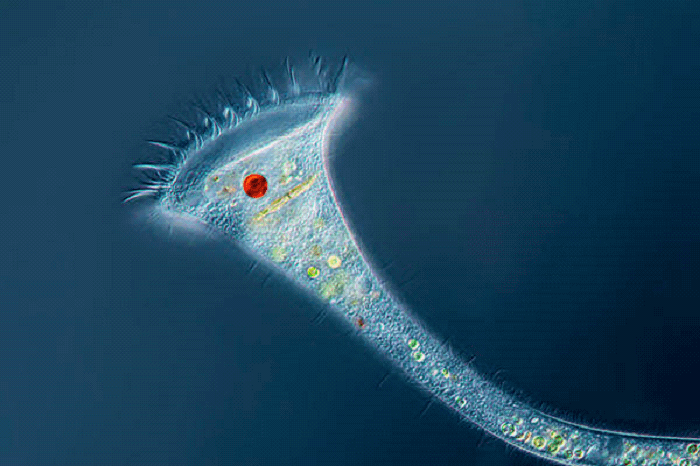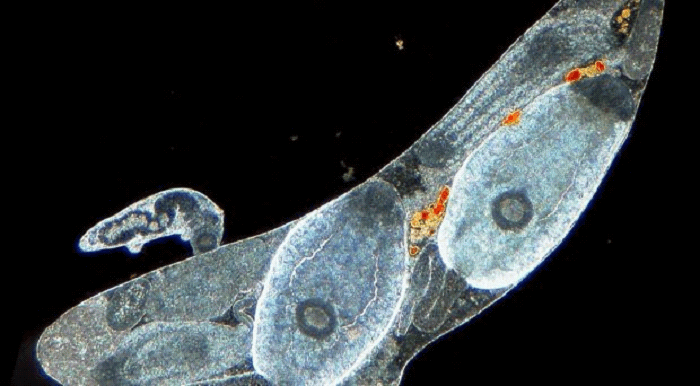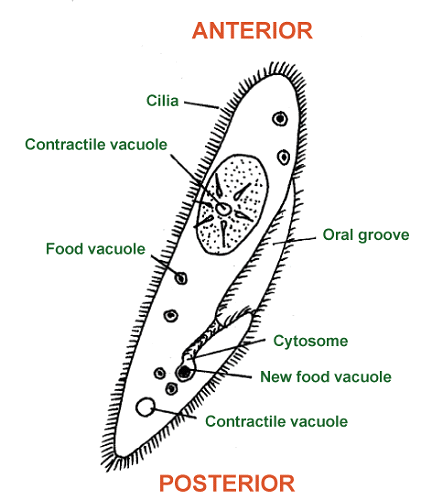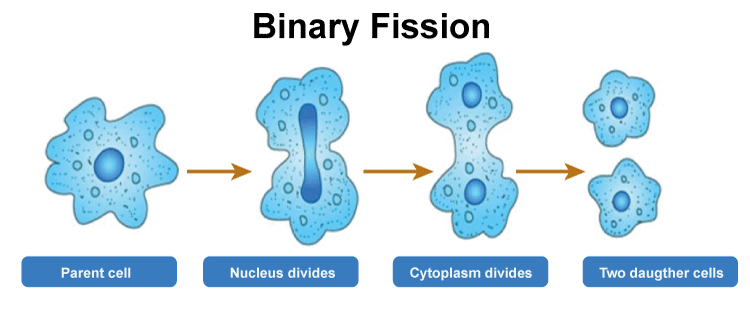Protozoa DefinitionWhat is Protozoa and its Significance?Protozoa are single-celled organisms with more than 65,000 identified species. These organisms are one of the most diverse groups on earth, which come in different shapes as well as sizes and have been around for millions of years. These are tiny organisms that serve as an essential food source for human beings and other creatures by consuming bacteria and algae in water and soil. This process mainly helps to recycle organic matter, which is significant to sustaining life on Earth. 
Protozoans are essential in research labs for studying biological processes like cell division, gene expression, and protein synthesis. They are also very useful for researchers to know about how cells function at the molecular level. In this guide, we will get information about Protozoa, their Role in Maintaining Ecological Balance, Significance and other facts. What do you mean by Protozoa?Protozoa are single-celled animals found in every habitat on earth, with over 50 thousand species. They can be herbivores, carnivores or omnivores. These organisms have existed on earth since the Pre-Cambrian era and can be found in the fossil record. Some types of Protozoa live on human bodies, either as commensals (not harmful) or pathogens (causing disease). Protozoa-related diseases are commonly found in individuals with AIDS. Some examples include Rhizopoda, Sarcodina, amoeba, and Mycetozoa. Protozoa Structure
Protozoa are tiny parasites that can measure less than 50 μm in size, with some intracellular forms being only 1 to 10 μm long. The largest known species, Balantidium Coli, can reach up to 150 μm in size. In addition, Protozoa are small and unicellular eukaryotes, which means they have a true nucleus enclosed in a membrane. The nucleus also contains chromatin, which is scattered throughout the cell. Protozoa possess numerous organelles that perform vital functions identical to organs in higher animals. One of the most notable characteristics of protozoa is their cytosome. This structure allows them to ingest food particles and other small organisms into their cells for nourishment. Ciliates are another type of protozoan that possess both macronuclei and micronuclei, which play important roles in reproduction and gene expression. Despite being single-celled organisms, protozoa exhibit similarities to multicellular animals. For example, some species form colonies or aggregates for protection or feeding purposes. Others can differentiate into different forms based on environmental cues, such as light or nutrient availability. What are the General Characteristics of Protozoa?Protozoa are aquatic organisms that can be free-living or live in damp places. Some protozoa also live inside or on the bodies of animals and plants as parasites or commensals. 
Process of Reproduction in ProtozoaMost protozoa reproduce asexually, but some also reproduce sexually. 1. Asexual ReproductionProtozoa can reproduce asexually through various ways such as binary fission, multiple fission, as well as budding. i) Binary Fission 
ii) Multiple Fission Protozoa can reproduce asexually through multiple fission or Schizogamy, where the nucleus divides to create many nuclei before the body splits. During multiple fission, a daughter protozoan is formed from each nucleus and its surrounding cytoplasm before they separate. This process has been studied in Plasmodium, the malarial parasite, as well as certain amoebae like foraminiferans and radiolaria. iii) Budding Protozoa can reproduce asexually through budding, where daughter nuclei move into a cytoplasmic protrusion and then separate from the parent protozoan through fission. 2. Sexual Reproduction
Significant Advantages of ProtozoaProtozoa, also known as phylum protozoa, have important ecological and industrial benefits. They play a significant role in helping the environment and industry. Some of their key benefits are listed below: 1) Sanitation One of the most crucial roles played by protozoa is in sanitation. Protozoans enter polluted water sources and feed on bacteria present there. By killing these bacteria, they purify the water making it safe to drink. This process helps maintain hygiene levels and provides clean drinking water essential for human survival. 2) Food Protozoans also act as a source of food for both humans and fishes. Planktonic protozoa provide food directly or indirectly to small crustaceans, larvae, worms etc., which are then eaten by fish species found in oceans. Humans can consume these fish as part of their diet. 3) Digestion In addition to this, some species of protozoa help in digestion processes too. Termites host different kinds of symbiotic protozoa like Trichonympha and Colonymphya that live within their guts, helping them digest cellulose efficiently. Apart from ecological benefits, protozoans have industrial importance too as after their death they left skeletal deposits at the bottom layers of seas. These skeletal deposits are made up of calcium carbonate or silica that turn into sedimentary rocks over time with commercial uses. 4) Scope in Education Protozoans have been instrumental in scientific research for many years. They are favoured by several scientists and geneticists for various biological laboratory studies because of their tiny structures and fast reproduction rates. These protozoans have been utilised to study the evolution of living organisms, genetic modifications and disorders. In fact, the physiology of a cell was discovered with the help of these protozoans. 5) Oil Exploration Apart from their importance in scientific research, and they play a critical role in oil exploration. The marine species Foraminifera and Radiolaria contain oil deposits that can be explored using protozoa. This highlight shows that it is very helpful in oil exploration. Nutrition in Protozoa
Overall, despite being single-celled organisms, protozoa exhibit complex feeding mechanisms and metabolic pathways similar to higher animals - highlighting the diversity and complexity found within this group of microorganisms. ConclusionDespite their small size, Protozoa have ecological and industrial importance that cannot be overlooked. They play a significant role in various fields and provide benefits even after death. They play a significant role in various fields and provide benefits even after death. Protozoa are important in the food chain as prey for larger organisms and also play a crucial role in nutrient cycling by breaking down organic matter into smaller particles that plants can absorb. Protozoa are also essential for wastewater treatment and the production of medicines. They also assist in preserving ecosystems, leading to fertile soil, clean air and water, and habitats for wildlife. Hence, these organisms offer numerous advantages to all living beings, including humans.
Next Topic#
|
 For Videos Join Our Youtube Channel: Join Now
For Videos Join Our Youtube Channel: Join Now
Feedback
- Send your Feedback to [email protected]
Help Others, Please Share










